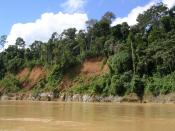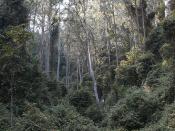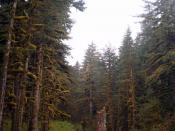The Amazon: The Past, The Present, The Future
Introduction to Rainforests
A rainforest is classed as an area of lush vegetation with higher than average temperatures and yearly rainfall. Rainforests are the most biologically diverse ecosystems in the world, containing more than 50% of the worlds plant and animal species, yet only accounting for 7% of the Earth's land surface.
A rainforest comprises of four levels, starting with the emergent trees. These are individual trees that stick out above the canopy, and can reach heights of 35 to 70 metres.
The canopy is made up of tree crowns that form a continuous layer. This layer receives the most sunlight, and can range in heights of 20 to 50 metres. This level contains the most animal life including birds, insects and small mammals.
Just below the canopy is a mid-story level, which is made up of woody plants, such as large shrubs and midsize trees.
The lowest level is the understory composing of palms and tree seedlings and saplings. This level only receives 2% of the sunlight, making it very dark and home to many creepy crawlies feasting on rotting vegetation.
The Past: Indigenous People
Most of the world's tropical rain forests are inhabited, and have been for thousands of years, by indigenous people who depend on the forests for their livelihoods. Many indigenous people live deep within the rain forest in areas that, to this day, are accessible only by river. Anthropologists believe that as many as 1,000 different cultures of indigenous peoples may be living in rain forests worldwide. Although each indigenous group has a different culture and customs, they all share a dependence on the rain forest habitat in which they live.
Indigenous tribes often possess a great wealth of knowledge about the rain forests, including the medicinal...


